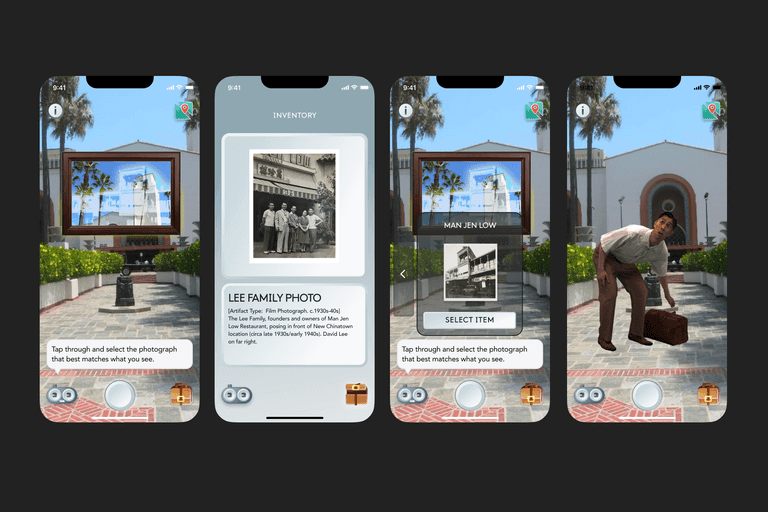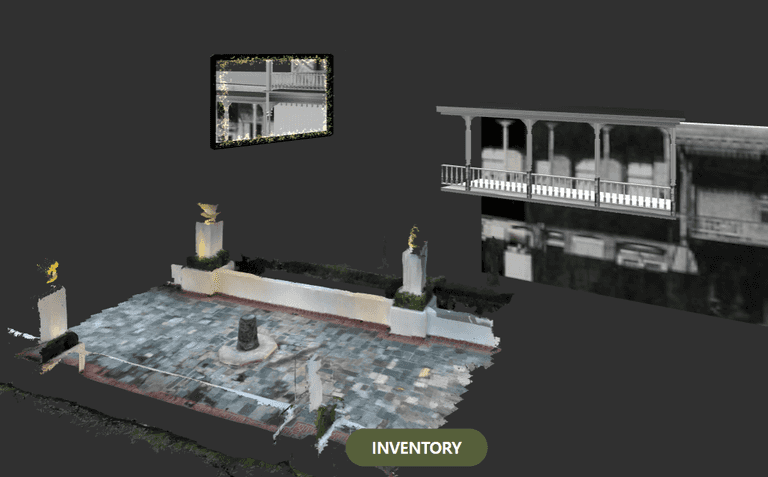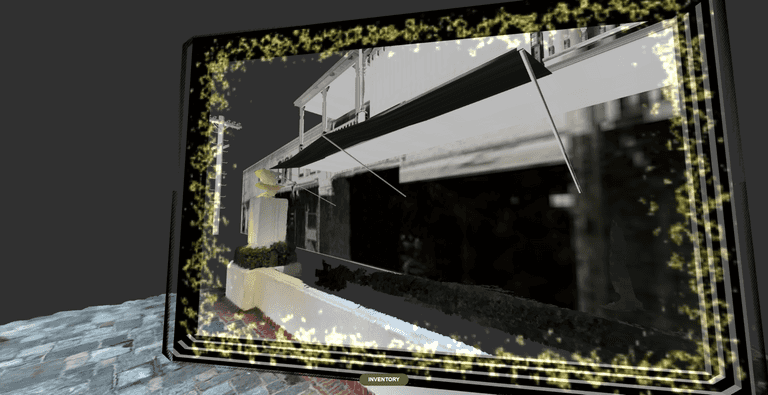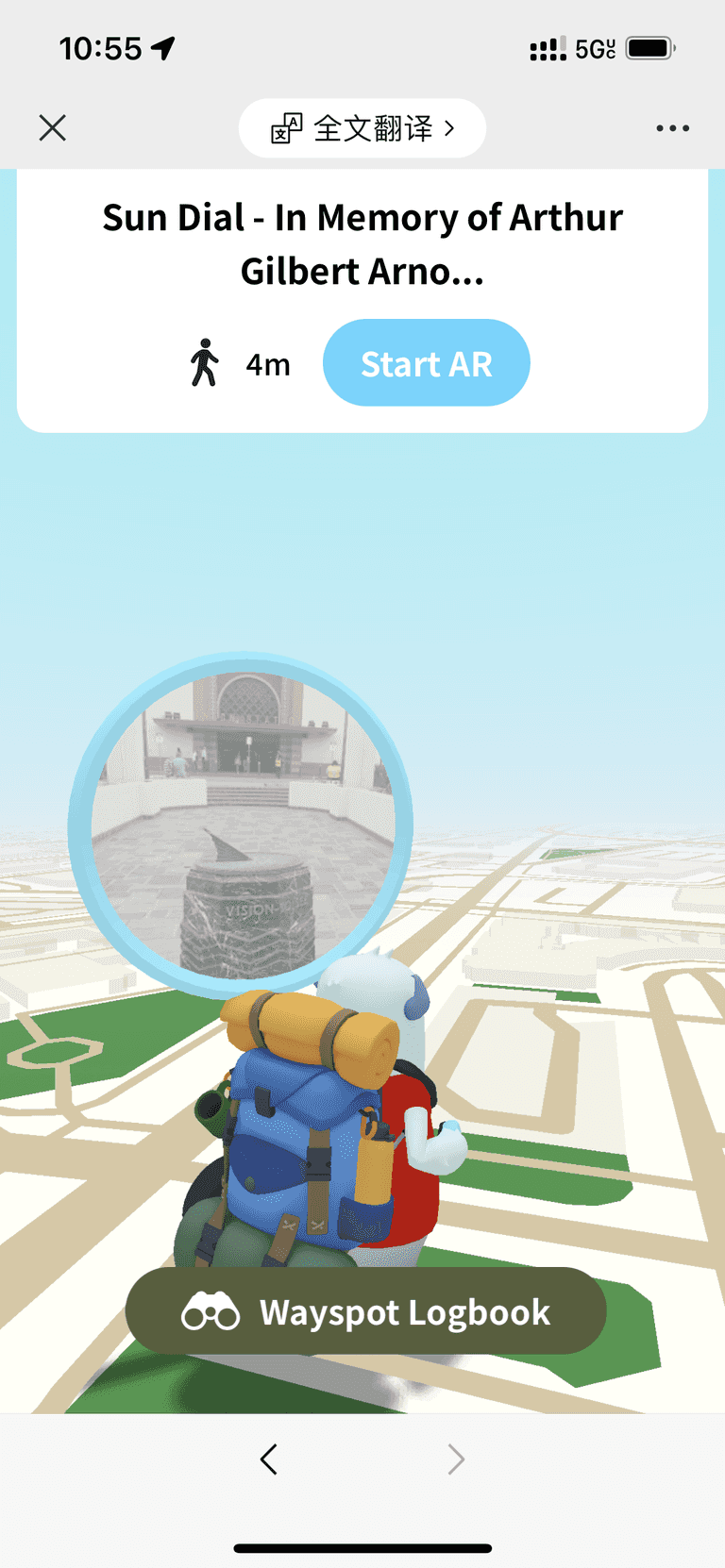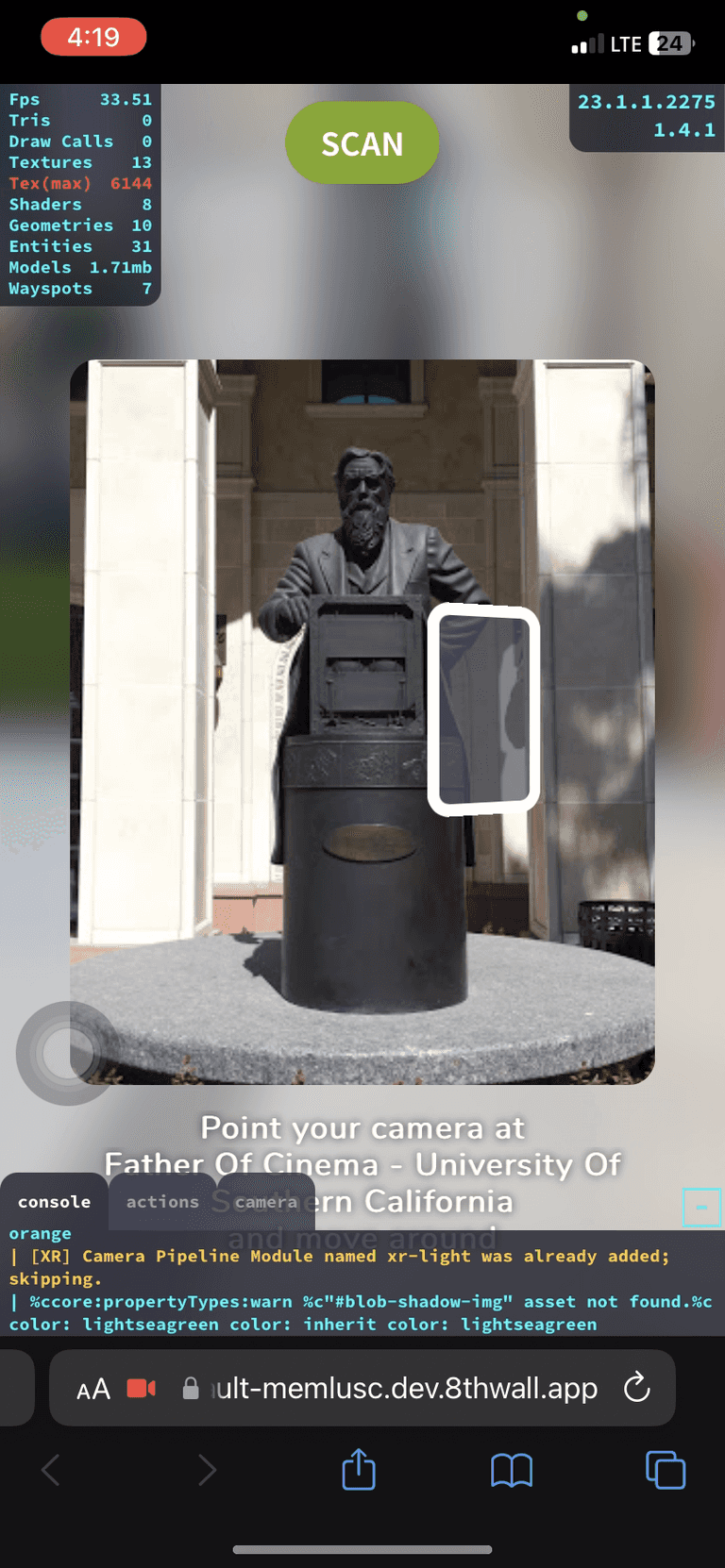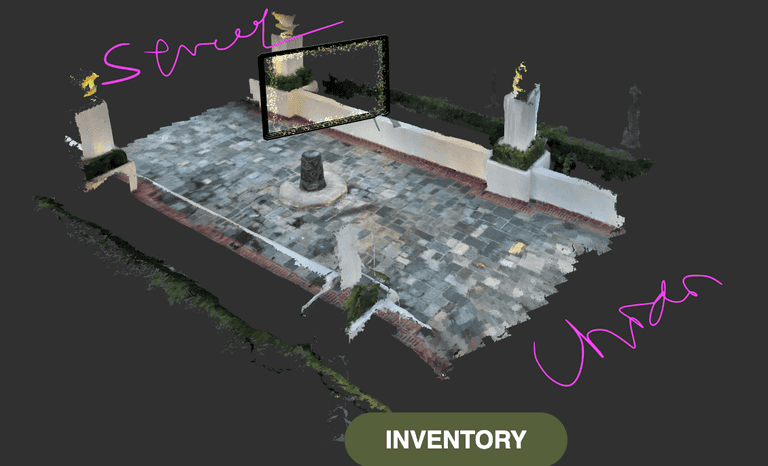[WEB AR] Chinatown History in LA
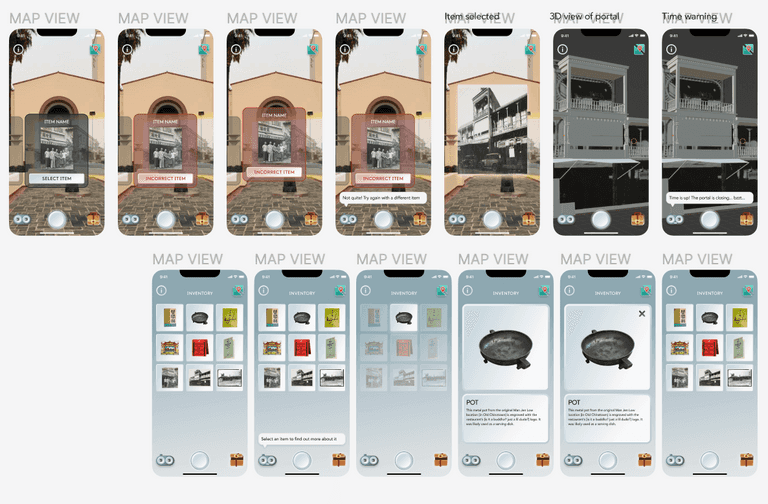
Please watch the video for the full on-site AR experience
Position: Lead Developer (Web, AR)
- Project: Chinatown AR Experience
- Sponsor: NEH Foundation
- Location: Huntington, LA Metro
- Date: August 2023 - present
Team: USC Mobile & Environmental Media Lab (Led by Professor Scott Fisher)
- Directed cross-functional teams consisting of 10+ developers, designers, and producers.
- Actively coordinated with 8th Wall employees for technical solutions and bug reporting.
Venue: Union Station, Los Angeles Chinatown
Type: Web-based Augmented Reality Website
Tools:
- 8th Wall
- AFRAME API
- Vanilla Javascript
- Blender
Environment Construction:
- Designed an 8th Wall Augmented Reality website spanning 5+ pages with scene transitions.
- Integrated the narrative of Chinatown history into the AR experience.
- Used the Visual Positioning System based on Aframe and 8th Wall API.
Visual Effects:
- Developed occlusion effects for the portal and embedded 3D models.
- Implemented UI/UX design, curating 5+ scene transitions between user menus and AR scenarios.
Player Interaction:
- Developed AR features, inventory management, and scenes using 8th Wall and AFRAME API.
- Incorporated camera raycasting for enhanced AR interactivity.
- Engineered a system to check the camera frustum for AR objects.
- Created a proximity detection system with the target to refine user experience during portal interactions.
Infrastructure:
- Guided the optimization process alongside 3 designers to refine GLB/GLTF models, focusing on texture management and Draco compression.
3D modeling integration
- Used the metric reflecting the real distance relative to the wayspot
- Measured the entire LA UNION STATION sundial wayspot venue
- To make sure the AR 3D model to spawn at the desired location when the users scan the wayspot
- Optimization for web, app, XR
-
- Initially, the model's filesize was too big to be used in web
-
- Troubleshooted if it were Rhino problem, or mesh or texture issues
-
- Rhino uses NURBS, Maya and Blender you can use Polygon instead NURBS
-
- Texture file size was too big. The ideal or maximum size of texture would be 1024x1024.
-
- Texture file format: png to jpg. Reduce filesize
-
- Upload the entire 3D model with UV mapped to gltf.report website which allows you to optimize texture size as well as 3D modeling compression, using draco technology developed by google.
-
- 8th wall only supports glb 3D file format, which is preferred in most of web-based 3D assets even in other libraries such as threejs.
- You can use draco compression on glb, gltf file format.
- Maya doesn't support glb/gltf export, so we had to ultimately use Blender as the last part of 3D pipeline.
- 8th Wall / A-frame API: simple way to integrate 3D or webVR into the website. A-frame is an eaiser wrapper library of threejs.
- draco:
gltf-model="dracoDecoderPath: https://cdn.8thwall.com/web/aframe/draco-decoder/
-
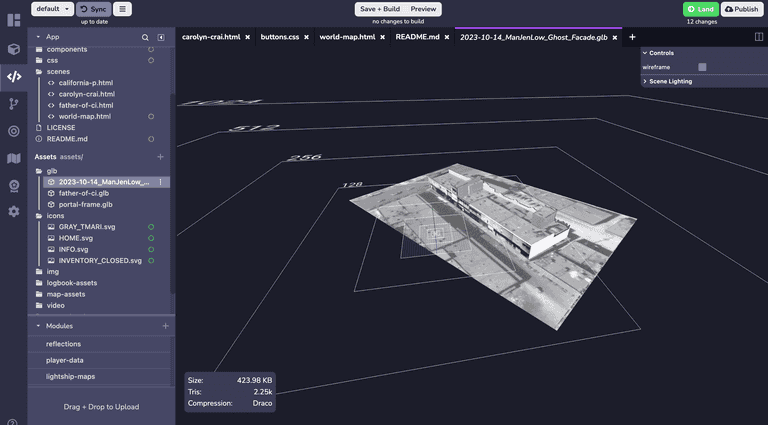
// loading in the beginning of the scene.
<a-scene
landing-page
activate-portal
vps-coaching-overlay
background="color: #303030"
renderer="colorManagement: true"
gltf-model="dracoDecoderPath: https://cdn.8thwall.com/web/aframe/draco-decoder/"
xrextras-runtime-error
xrextras-loading
ui-component="currentScene: mobileSundial;"
xrweb="enableVps: true; allowedDevices: any">
<a-assets>
<a-asset-item id="vps-mesh" src="../assets/glb/sun-dial---i.glb"></a-asset-item>
<a-asset-item
id="men-jen-low"
src="../assets/glb/2023-10-11_MenJenLowBlock_Frame_Without_extrusion-draco.glb"></a-asset-item>
<a-asset-item id="portal-frame" src="../assets/glb/portal-frame.glb"></a-asset-item>
<img id="holo-placeholder-img" src="../assets/img/DavidSilhouette.png" />
<video
id="portal-video"
muted
autoplay
playsinline
crossorigin="anonymous"
loop="true"
src=".././assets/video/manjenlow_monet_2.mp4"></video>
<img id="skybox-img" src="../assets/img/skybox.jpg" />
<img id="blob-shadow-img" src="../assets/img/blob-shadow.png" />
<img id="men-jen-low-img" src="../assets/img/manjenlowCafe.jpg" />
</a-assets>// After you scan sun-dial, all the a-entity tags inside this will appear
<a-entity id="VPSMesh" named-wayspot="name: sun-dial---i">
<!-- Made MJL model transparent in the beginning. -->
<a-entity
id="ghostBuilding"
gltf-model="#men-jen-low"
model-transparent="opacity: 0.3">
</a-entity>
<!-- all other AR objects you want to spawn -->
<!-- Inside the portal. Same building without transparency -->
<a-entity
id="men-jen-low"
gltf-model="#men-jen-low"
reflections="type: realtime"
shadow="receive: false">
</a-entity>
</a-entity>